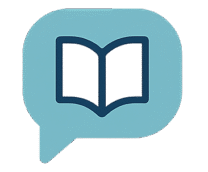 Learning a new language has taken on a whole new meaning in today’s digital age. With smartphones, apps, and online courses so widely available, it’s easy to assume that traditional language learning methods have faded into the past. From my own experience as someone who’s tried both flashcard apps and classroom lessons, I know that the tried-and-true methods still offer a lot of benefits for learners. In this article, I’ll talk about why those books, classrooms, and classic exercises still play an important role in modern learning—and how you can use them right alongside digital tools for better results.
Learning a new language has taken on a whole new meaning in today’s digital age. With smartphones, apps, and online courses so widely available, it’s easy to assume that traditional language learning methods have faded into the past. From my own experience as someone who’s tried both flashcard apps and classroom lessons, I know that the tried-and-true methods still offer a lot of benefits for learners. In this article, I’ll talk about why those books, classrooms, and classic exercises still play an important role in modern learning—and how you can use them right alongside digital tools for better results.
The Value of Traditional Language Learning in Today’s World
There’s no doubt that apps, podcasts, and online tutors have transformed how people pick up a new language. Still, going to a classroom or working with textbooks and pen-and-paper routines offers real advantages. I once joined an evening French class at the community center, and the structure really helped me stay on track after losing steam with self-paced apps.
Traditional methods help create routine and discipline. A set lesson plan or scheduled class can keep learners motivated. In a classroom, a teacher guides your learning and answers questions in real time. You also get feedback on pronunciation, grammar, and usage—something that automated apps sometimes miss or oversimplify.
Textbooks and printed materials often present the basics in a logical order, allowing learners to build a strong foundation. I remember using old grammar workbooks to tackle verb conjugations, and that hands-on practice made the rules stick more effectively than tapping on a screen.
While digital formats are cost-effective and present interactive content, many learners still prefer the tangible satisfaction that comes from flipping through pages. Those physical reminders keep you connected and reinforce what you’re learning in a way that’s tough to mimic online.
Key Benefits of Non-Digital Language Learning Materials
Physical materials like flashcards, notebooks, and textbooks offer hands-on interaction you can’t fully experience with digital tools. Writing out words and grammar points by hand creates muscle memory, which I found absolutely necessary when I was trying to master tricky irregular verbs in Spanish. There’s something about physically flipping through a book or jotting in a notebook that creates better mental links.
Traditional resources are useful in every situation. I’ve traveled to places where WiFi drops out or batteries run low, but a paperback dictionary or phrasebook is always ready to go. These materials last over time and don’t depend on updates or software support; they’re reliable and timeless study partners.
- Better Focus: With no notifications or pop-ups to pull you away, it’s easier to focus on learning.
- Physical Engagement: Annotating texts, highlighting words, and shuffling paper flashcards help with memory and engagement.
- Curated Content: Many printed resources are written and reviewed by professional educators, so the information is dependable and well-organized.
Face-to-Face Interaction and the Social Side of Language Learning
Learning a language is more than cramming vocabulary—it’s about being able to speak and understand real people in real situations. In traditional classrooms, students interact directly with teachers and peers. For me, classroom conversations and group exercises felt intimidating at first but before long, they started to build up my confidence and communication skills. The encouragement from others made a real difference.
Live interaction gives you genuine correction and feedback right away. If I made a mistake saying a word or misunderstood a question, my teacher or classmate could help right on the spot. These group settings build speaking and listening skills, and also provide cultural cues that can be missing from tech-based lessons. While some apps do offer video chats or simple practice with chatbots, they’re not the same as a real, spontaneous conversation with another person.
I’ve also found that language clubs, meetups, and study groups are fantastic ways to practice—and having a real conversation partner helps keep you motivated through the natural ups and downs of the learning adventure. Practicing with a person pushes you out of your comfort zone and brings a sense of connection you just can’t match by chatting with an AI.
The Role of Structure and Routine in Language Mastery
Regular routines are critical for making progress in any subject, and language learning is no exception. Traditional classrooms and scheduled homework create a sense of accountability. I still clearly remember the pride I felt after finishing each weekly assignment in my high school German class. That steady pace carried me forward, even when my excitement for learning started to dip.
This sort of structure keeps you from falling into the habit of only practicing what you enjoy—like vocabulary games—while neglecting the other aspects, such as grammar, conversation, or writing. Traditional classes make sure you get a well-rounded experience, and they set a rhythm so you don’t just study on a whim.
How Technology Has Changed—but Not Replaced—Traditional Learning
 Tech tools are handy, and they’re especially helpful for those short on time. For example, I use dictionary and translation apps when I’m on the move, but I still keep a paper journal where I write down sentences by hand. These types of digital tools are great for instant results, but a teacher or language partner can break down why a mistake happened and help you fix it properly.
Tech tools are handy, and they’re especially helpful for those short on time. For example, I use dictionary and translation apps when I’m on the move, but I still keep a paper journal where I write down sentences by hand. These types of digital tools are great for instant results, but a teacher or language partner can break down why a mistake happened and help you fix it properly.
Online learning is a blessing for busy adults who can’t get to an in-person class. With pre-recorded video lessons and virtual tutors, you can get advice from native speakers on your own schedule. But in my experience, adding traditional habits—like reviewing handwritten notes or joining a local language group—makes the process more balanced and keeps it social.
Examples When Traditional Methods Outperform Digital Tools
- Pronunciation Correction: A teacher can spot subtle accent issues or unclear speech, while speech recognition in apps may overlook these details.
- Complex Grammar: Breaking down advanced grammar, such as tense usage, tends to be much clearer with a live instructor or a detailed printed resource.
- Building Community: Group classes foster camaraderie, motivation, and teamwork among classmates—something online apps can’t always provide.
Common Roadblocks and Tips for Mixing Old and New Approaches
Some people worry that traditional methods are slow or just not exciting enough. I used to feel bored by pages of textbook drills. But over time, I realized that mixing in some digital excitement—like podcasts or fun vocab games—with my regular notebook study helped me stay on track and actually enjoy learning.
If budget or schedule is tight, free community classes and language clubs at a library can smooth the way for more practice. Most libraries lend out language learning books, workbooks, and sometimes even audio courses so you don’t have to buy new materials. Finding a study partner, even an online one, can make studying feel less lonely and help hold you accountable.
Frequently-Asked Questions
Is digital learning the future of education, or do classrooms still play an important role?
Classrooms are still extremely valuable for language learning, thanks to personal contact, structured routines, and real-time feedback. Online methods are flexible and convenient, but combining them with live instruction and printed materials gives you the best shot at making progress.
Which is more valuable—digital or traditional language materials?
Each approach has strengths. Digital materials are easy to access and update, but traditional materials encourage deeper focus and a more structured, hands-on experience. Using them together gives you a richer and fuller learning experience.
Why is language learning so important today?
Being able to speak more than one language opens the door to new jobs, travel opportunities, and friendships. It can give a boost to your brain health and help you track down what makes different cultures tick. No matter your goals, language learning is a smart way to invest in your future.
How has technology impacted language learning?
Technology has made language study more accessible than ever, offering instant resources and the chance to connect with speakers worldwide. But technology alone can’t replace the benefits of real conversation, written practice, or the discipline and structure of classroom learning.
Practical Ways to Combine Traditional and Digital Language Learning
Pairing digital resources with traditional ones gives you the best of both worlds. For instance, I study new vocab with an app, then write those words and sentences by hand to help build muscle memory. Going to an in-person class, then reviewing lessons with online quizzes at home, helps me cover more ground.
- Use textbooks or grammar workbooks to lay the foundation, and then test yourself with an app or a language partner.
- Record your speaking sessions with your phone so you can listen back and spot mistakes, and also join a conversation group for live feedback.
- Make paper flashcards for tricky words and shuffle them whenever you have a spare moment. They work great even if your phone’s battery runs out!
Learning a language is an adventure, not just a checklist. Whether you’re learning for work, travel, or just for fun, mixing traditional methods with tech tools will almost always make things smoother and a lot more enjoyable. When you find the right combo, you’ll get digital convenience and also the deep learning that only comes from real conversations and focused hands-on practice. Time to jump in and get talking!
